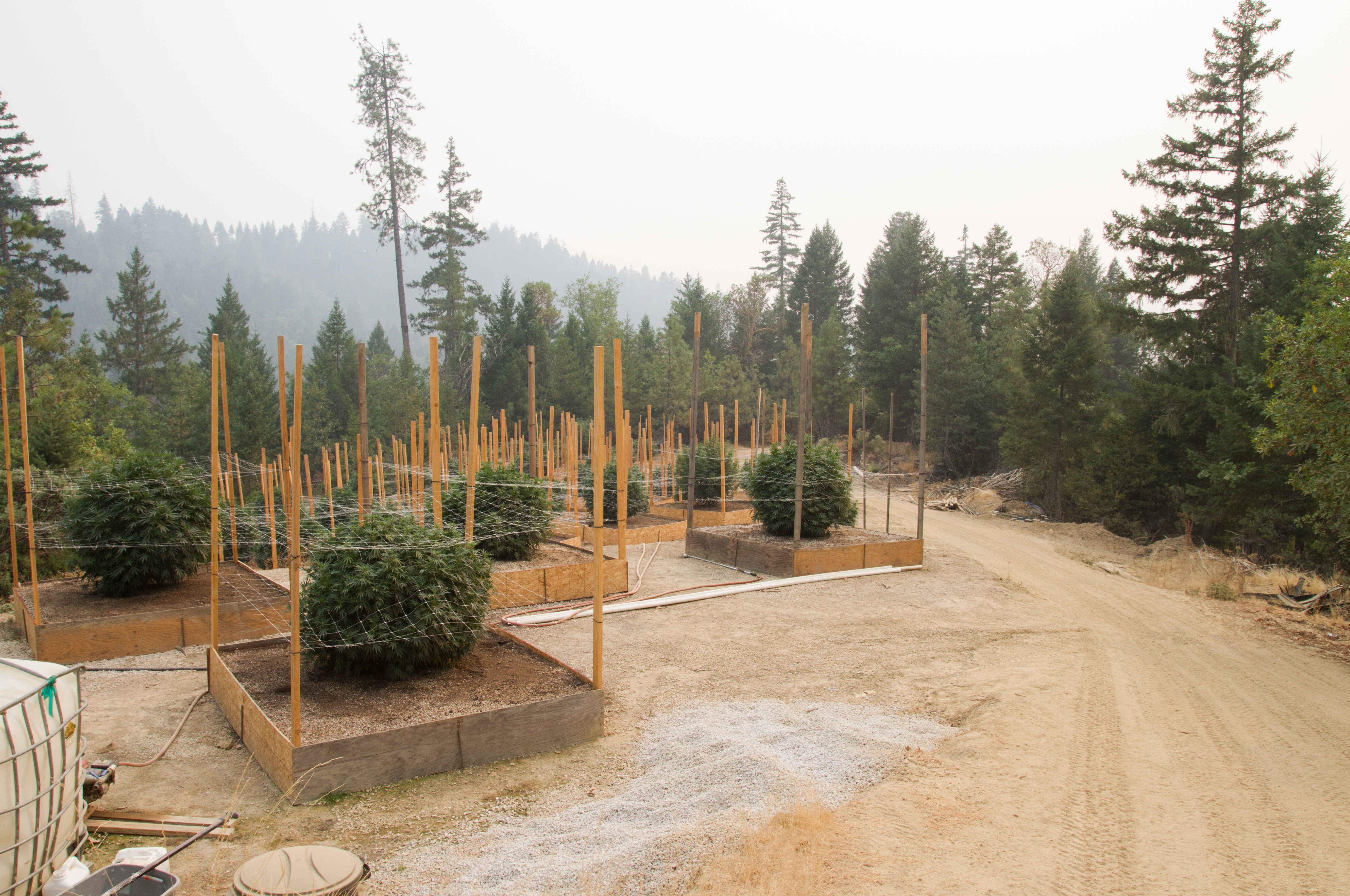In the midst of a new “green rush” of cannabis production in the United States, Western states in particular are grappling with what this rapidly-expanding industry may mean for the environment. Long before statewide legalizations went into effect, cannabis has traditionally been farmed in rural, biodiverse regions. The expansion since legalization raises concerns that a booming industry could negatively impact local wildlife in these areas.

Cannabis is traditionally grown in rural, biodiverse regions such as the farm pictured here. Photo by Phoebe Parker-Shames.
Many small-scale farmers market their products and farming operations as eco-friendly. However, policymakers, environmental managers, farmers, and the public lack sufficient data examining the status of wildlife on and surrounding cannabis farms. Such data could help guide conservation and environmental recommendations for an emerging industry.
New research published in the California Fish and Wildlife Journal today, led by scientists in the Department of Environmental Science, Policy, and Management (ESPM), tackles this gap by surveying species on and surrounding small-scale cannabis farms. It is one of the first known ecological studies conducted on active, private-land cannabis farms.
“It’s a really critical first step, so we can start to get a sense of what these farms are like, and what sort of opportunities there might be for wildlife to coexist with this rapid land use change,” said Phoebe Parker-Shames, lead author and PhD candidate in ESPM.
Wildlife visit cannabis farms at all times of the day. Photo by Phoebe Parker-Shames.
Partnering with farmers and other land owners, the researchers placed wildlife monitoring cameras on small-scale cannabis farms and in surrounding areas in 2018 and 2019. The researchers found that, despite hosting a diverse range of wildlife, the farms were more tolerable to some species than others—for instance, small and domestic animals used the farms at higher rates while most predators became scarcer. In addition, space-use modelling demonstrated that a small selection of species, like black-tailed deer and gray foxes, may avoid cannabis farms all together. The results suggest that cannabis farms could have important ramifications for wildlife behavior and access to habitat.
Previous research on cannabis and wildlife have focused on examining the impact of illegal farming operations, or “trespass grows”, on federal or state land. Whereas trespass sites have been implicated in widespread wildlife poisoning and poaching, the small-scale farms included in this study had an ecological footprint similar to that of other types of rural development, such as housing in wildland interfaces or subsistence agriculture. The similarities may help provide insights from other studies on rural land use change, informing the development of environmental mitigation strategies for cannabis.
“To me, these results really highlight that trespass grows and small-scale farms, regardless of legal status, operate very differently, and have very different impacts on local wildlife,” explains Parker-Shames. “While this doesn’t mean that small farms can’t have impacts on local wildlife, those impacts are at least a bit more predictable. It gives me hope that these small farms can find a way to manage for conservation needs.”
Senior author and ESPM professor Justin Brashares added, “Legalization moved so quickly in California that regulatory agencies had to enact policy without the benefit of science to inform their environmental protections; we hope this work and other current collaborative efforts help address this gap.”
Additional authors on the study were ESPM PhD candidate Wenjing Xu and California Department of Fish and Wildlife Senior Environmental Scientist Dr. Lindsey Rich. The research is one of many efforts from UC Berkeley’s Cannabis Research Center to promote interdisciplinary scholarship on the environmental and social dimensions of cannabis production.
